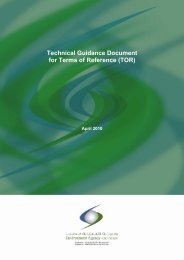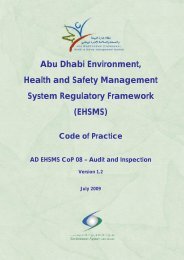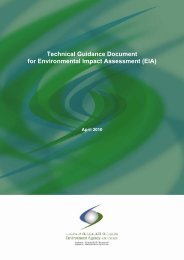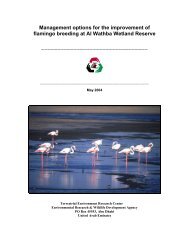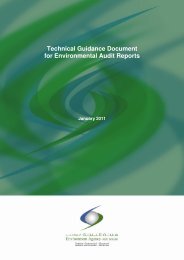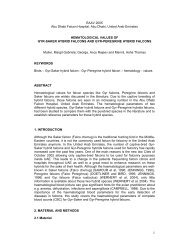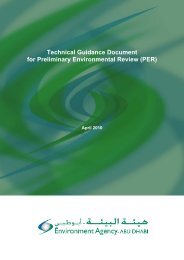Technical Guidance Document for Environmental Action Plan (EAP)
Technical Guidance Document for Environmental Action Plan (EAP)
Technical Guidance Document for Environmental Action Plan (EAP)
Create successful ePaper yourself
Turn your PDF publications into a flip-book with our unique Google optimized e-Paper software.
<strong>Technical</strong> <strong>Guidance</strong> <strong>Document</strong> <strong>for</strong> <strong>Environmental</strong> <strong>Action</strong> <strong>Plan</strong><br />
• Determine if the same or similar problems have previously occurred or been identified. If so,<br />
review the assessment or event that identified the problem finding, the results of the finding<br />
evaluation, and the effectiveness of the corrective actions implemented to resolve and prevent<br />
recurrence of that finding. This in<strong>for</strong>mation should be included in the current evaluation of<br />
the problem finding.<br />
• Consider developing a prioritisation process based on the significance, complexity, and<br />
impact of each problem finding to determine the sequential order <strong>for</strong> development and<br />
implementation of the corrective actions. Other factors (e.g., resource costs) should also be<br />
considered. The prioritisation process may include numerical prioritisation of each individual<br />
finding or the establishment of a number of priority categories.<br />
• For identified problem findings with lower significance, investing in a rigorous evaluation to<br />
identify the contributing factors may be deemed unnecessary. The focus should then be on<br />
correcting the immediate or apparent cause without addressing the root cause. If similar<br />
problems subsequently occur, then the evaluation of trends may assist in identifying the<br />
commonalities of the problems and determining their causes.<br />
• Identify, validate, and categorise the contributing factors, which include the events and<br />
conditions (e.g., who, what, when, where, how, why) concerning the problem finding. These<br />
factors may include causes that directly resulted in the problem finding, contributing causes<br />
that collectively increased the likelihood of the finding but did not individually cause it, and<br />
the root cause that, if corrected, would prevent recurrence of the finding and similar findings.<br />
• Develop conclusions based on the facts identified and an analysis of the contributing factors<br />
to determine the details of the specific problem and how and why it became a problem. The<br />
conclusions may also address specific concerns to the site/organisation in relation to the<br />
identified problem.<br />
• For significant problem findings that are more complex or require segmented or multilevel<br />
evaluations, conduct a quality review and critique of the finding evaluation process upon<br />
completion of the evaluation to validate the facts and contributing factors (including root<br />
causes) that support the conclusions. Any identified inconsistencies should be re-examined<br />
and resolved be<strong>for</strong>e the development of corrective actions.<br />
• Analyse identified problem findings and their associated causes to determine the existence of<br />
trends to identify the same or similar occurrences, generic problems, vulnerabilities, and<br />
cross-functional weaknesses at the lowest level be<strong>for</strong>e significant problems result.<br />
4. Corrective <strong>Action</strong> Development<br />
Based on the results of the root cause analysis, the responsible site/organisation should develop,<br />
prioritise, approve, track, and complete all corrective actions in a timely manner to effectively resolve<br />
and prevent recurrence of each problem finding.<br />
The level of significance and impact of each identified problem finding defined during the evaluation<br />
of the findings should be the major factors in determining the amount and priority of resources (e.g.,<br />
funding, personnel, time) used to implement the corrective actions and the type and degree of tracking<br />
and reporting of the status of corrective actions to successful completion.<br />
Considerations in developing corrective actions to resolve each problem finding effectively include<br />
the following:<br />
• Ensure that the contributing factors and conclusions from the evaluation of the problem<br />
finding are logical and comprehensive.<br />
• Ensure that the corrective actions address all aspects of each causal factor identified <strong>for</strong> the<br />
problem finding. These may entail one or several corrective actions to resolve the finding.<br />
The corrective actions may include both remedial actions (to remedy the finding) and<br />
preventive actions (to prevent the same and similar findings from recurring).<br />
8





